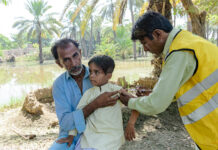 WASHINGTON: Adult sleepwalking is potentially serious and may induce violent behaviors and affect health-related quality of life, a new study has found.
WASHINGTON: Adult sleepwalking is potentially serious and may induce violent behaviors and affect health-related quality of life, a new study has found.
“We found a higher frequency of daytime sleepiness, fatigue, insomnia, depressive and anxiety symptoms and altered quality of life in patients with sleepwalking compared to the control group,” said Yves Dauvilliers from Gui-de-Chauliac Hospital in Montpellier, France, the study’s principal investigator and lead author.
“What would usually be considered a benign condition, adult sleepwalking is a potentially serious condition and the consequences of sleepwalking episodes should not be ignored,” Dauvilliers said in a statement.
Results show that 22.8 per cent of sleepwalkers presented with nightly episodes and 43.5 per cent presented with weekly episodes.
Additionally, a positive history of violent sleep related behaviors was found in 58 per cent, including 17 per cent who experienced at least one episode involving injuries to the sleepwalker or bed partner that required medical care.
Reported injuries included bruises, nose bleeds and fractures, and one participant had sustained multiple fractures and serious head trauma after jumping out of a third-floor window.
Sleepwalking is a common parasomnia affecting up to four per cent of adults. It involves complex behaviors that occur during arousals from non-rapid eye movement (NREM) sleep.
During an episode of sleepwalking the brain is partially awake, resulting in complex behaviors, and partially in NREM sleep with no conscious awareness of actions.
According to the researchers, this is the largest prospective cohort study on adult sleepwalkers seen in a clinic, using face-to-face clinical interviews, standardized questionnaires, and objective assessment by polysomnography to investigate the clinical characteristics, consequences and co-morbidities of sleepwalking.
The study, appearing in the journal SLEEP, involved a prospective case-control study of 100 adult patients in whom primary sleepwalking was diagnosed from June 2007 to January 2011.
Exclusion criteria included a positive clinical history of REM sleep behavior disorder (RBD), a similar parasomnia that involves violent dream-related behaviors emerging during REM sleep.
The age of the sleepwalkers ranged from 18 to 58 years with a median age of 30. Results were compared with 100 healthy control subjects.
Triggering factors that increased both the frequency and severity of episodes were reported in 59 per cent, related mainly to stressful events, strong positive emotions, sleep deprivation, and less frequently to drug or alcohol intake or intense evening physical activity. -PTI






